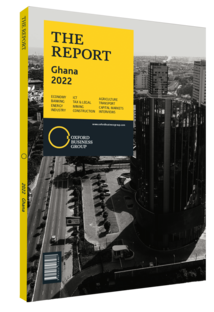Which sectors will benefit from Ghana's construction plans?
As part of a coordinated approach to infrastructure development, the government has launched various construction programmes in recent years that allow for measurable, tangible progress.
Agenda 111
In response to Ghana’s shortage of health care facilities that was highlighted by the Covid-19 pandemic, the government launched Agenda 111, which involves the construction of 111 hospitals throughout the country. The project entails the building of 101 district hospitals, seven regional hospitals and two specialised hospitals, while Effia-Nkwanta Regional Hospital, located in the Western Region, will undergo extensive renovations. Sites had been identified for 88 of the 101 district hospitals as of August 2021, with the government stating at the time that it expected to acquire land for the remaining 13 soon. Agenda 111 was allocated $100m in start-up funding through the Ghana Investment Infrastructure Fund, and each new hospital is expected to cost $ 16m17m with medical equipment. Local contractors have been prioritised for the projects as the government seeks to leverage Agenda 111 to stimulate regional employment and economic growth. Construction of each hospital is expected to take around 18 months from the commencement of work.
One District, One Factory
Meanwhile, the One District, One Factory (1D1F) programme, first envisioned in 2016, is the latest step in the Ministry of Trade and Industry’s (MoTI) industrial diversification and decentralisation drive. In June 2020 the government mobilised GHS465m ($79.5m) to kickstart the project, which aims to provide at least one factory in each of Ghana’s 216 districts. While the 1D1F programme involves the rejuvenation of many existing and underperforming factories (an additional GHS256m [$43.8m] has been allocated for this purpose), the programme’s success depends heavily on the provision of entirely new sites, with around 150 factories and facilities under construction and a further 24 in the pipeline as of end-2021. Through the initiative, the MoTI intends to capitalise on the country’s natural resources by bolstering manufacturing capabilities and enhancing rural-urban connectivity.
Factories currently under construction include the AAK Citrus Processing Company in Abura Asebu Kwamankese (Central Region), the Ada Salt Development Cooperative in Ada East (Greater Accra Region) and the Adansiman Rice Company in Adansi South (Ashanti Region). In addition, 1D1F is expected to boost employment throughout the country, with a focus on providing youth training opportunities and reducing rural-urban migration.
One Region, One Industrial Park
Under the World Bank’s Ghana Economic Transformation Project, in February 2020 the government announced the allocation of $79m to its One Region, One Industrial Park initiative. The programme is to work in tandem with 1D1F to enable regional industrial expansion and specialisation, providing multiple investment opportunities in construction. Complicated land ownership and acquisition procedures have previously been a barrier for such projects, but by working to secure dedicated, litigation-free expanses of land, the government hopes that private sector players and multinational corporations will be keen to set up operations in the parks, particularly in light of the advent of the African Continental Free Trade Area.
Transport Upgrades
Transport infrastructure development along Ghana’s 695-km Eastern Corridor – which runs from the country’s southern ports through Greater Accra and into the country’s northern reaches – is expected to facilitate the success of the above initiatives. Broken down into sections, the project is to be funded by the government and various international financing bodies. One of those sections, the 92.5-km Eastern Corridor Road Development Programme, experienced its technical launch in 2020 (see Transport & Infrastructure chapter).
You have reached the limit of premium articles you can view for free.
Choose from the options below to purchase print or digital editions of our Reports. You can also purchase a website subscription giving you unlimited access to all of our Reports online for 12 months.
If you have already purchased this Report or have a website subscription, please login to continue.

